
Services
返回Testing Services
- Internet of Things authenticat
- UWB Product Certification
- 5G NR Product Certification
- Receiver Product Certification
- SAR testing
- Base station certification
- Interphone product certificati
- Wireless charging product cert
- WiFi Product Certification
- FM/AM Product Certification
- Bluetooth BQB Product Certific
- Mobile communication product c
- Wireless and communication det
- Automotive Electronic Testing
- EMI Test - Conducted Emissions
- EMI Test - Radiation Emission
- EMI testing - low-frequency ma
- EMI Testing - Transient Conduc
- EMS test - low-frequency magne
- EMS Test - High Current Inject
- EMS Testing - Portable Transmi
- EMS Test - Transient Conducted
- EMS Testing - Electrostatic Di
- EMS testing - radiation anti-i
- Electrical performance testing
- Voltage flicker test - Suzhou
- Electrical Fast Pulse Withstan
- Electromagnetic Radiation Tole
- Conducted Immunity Test (CS) -
- Conducted Interference (CE) -
- Common issues with high and lo
- Common issues with fatigue tes
- Common issues with vibration t
- Vibration
- Rapid temperature change test
- Performance testing of automot
- Automotive metal material test
- Comprehensive vibration test o
- Three comprehensive vibration
- Three comprehensive vibration
- Spoiler Three Comprehensive Vi
- Sunvisor Three Comprehensive V
- Comprehensive vibration test o
- Instrument panel/instrument pa
- Temperature shock/cold and hot
- Vibration testing
- Temperature shock test
- Reliability testing
- Automotive ELV&VOC
- Hazardous substance testing
- Testing of toys and baby produ
- Food contact material testing
- Leather Footwear Inspection
- Ecological textile testing
- Consumer Product Testing Servi
- Consumer Product Testing Servi
- Consumer Product Testing Servi
- Consumer Product Testing Servi
- Consumer Product Testing Servi
- Consumer Product Testing Servi
- Consumer Product Testing Servi
- Consumer Product Testing Servi
- Consumer Product Testing Servi
- Automotive ELV&VOC
- Reliability testing
- Climatic Environmental Testing
- Climatic Environmental Testing
- Climate environment testing -
- Climatic environmental testing
- Climate environment testing -
- Climatic environment test - co
- Climatic Environmental Testing
- Climatic Environmental Testing
- Climatic environment testing -
- Climate Environmental Testing
- Climatic environment testing -
- Climate environment testing -
- Mechanical testing - Vibration
- Mechanical testing - Three com
- Mechanical inspection - mechan
- Mechanical testing - Drop test
- Mechanical testing - Packaging
- Other tests - Voltage withstan
- Other tests - Drum drop test
- Other tests - tensile testing
- Other tests - Drum drop test
- Other tests - Paper tape wear
- Other tests -100 grid test
- Other tests - Alcohol abrasion
- Other tests - pencil hardness
Certification Services
Register for the record
Systems and Training Services
Laboratory design and construction
Contact Us


National 24-hour service hotline
86+13560405821
Group Headquarters
E-mail: Lymay.zhong@lcs-cert.com
Address: Juji Industrial Park, Xueziwei, Ngabian, Shajing Street, Baoan District, Shenzhen Building A 1~2F, Building C 3F
Reliability testing
Product range:
Background introduction to reliability testing
Tests carried out to measure, verify or improve product reliability are called reliability tests and are an important part of product reliability work.
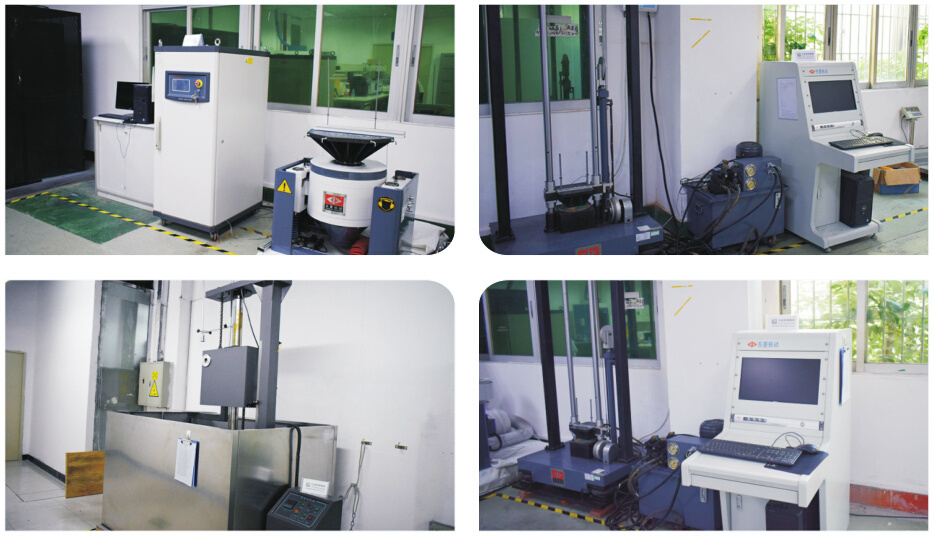
Generally, the purpose of reliability testing of products is as follows:
(1) In the development stage, the product reaches the predetermined reliability index. In order to make the product reach the predetermined reliability index, in the development stage need to carry out reliability test on the sample, in order to find out the problems of the product in raw materials, structure, process, environmental adaptability, etc., and to improve, after repeated tests and improvements, you can continuously improve the reliability indicators of the product to meet the predetermined requirements.
(2) Reliability appraisal is carried out during product development. When developing and formulating new products, identification tests should be carried out according to product standards (or product technical conditions) in order to comprehensively assess whether the product meets the specified reliability indicators.
(3) Control the quality of products in the production process. In order to produce products stably, it is sometimes necessary to conduct reliability tests on the items specified in the technical conditions of each product. In addition, reliability sampling tests are carried out batch-by-batch or over a certain period of time. Through the reliability test of the product, we can understand the stability of product quality. If the product quality is reduced due to poor raw material quality or uncontrolled process flow, it can be reflected in the product reliability test, so that corrective measures can be taken in time to restore the product quality to normal.
(4) Screening products to improve the reliability level of the whole batch of products. Reasonable screening can eliminate products that fail early due to various reasons (such as defective raw materials, improper process measures, operator negligence, production equipment failure, and lack of strict quality inspection, etc.), thereby improving the reliability level of the whole batch of products.
(5) Study the failure mechanism of the product. Through product reliability tests (including simulation tests and field use tests), the failure modes and failure laws of products under different environments and different stress conditions can be understood. Through the analysis of failed products, the internal causes of product failure (i.e. failure mechanism) and weak links of the product can be identified, so that corresponding measures can be taken to improve the reliability level of the product.

Climate environment detection:
Test the project | Reference standards | Range of competence |
Low temperature test | GB/T 2423.1-2008; IEC 60068-2-1: 2007 IN 60068-2-1: 2007 | -40°C,1m×1m×1m |
High temperature test | GB/T 2423.2-2008; IEC 60068-2-2: 2007 IN 60068-2-2: 2007 | +150℃,0.5m3 |
Constant damp heat test | GB/T 2423.3-2016; IEC 60068-2-78: 2012 IN 60068-2-78: 2013 | Temperature range: -40°C~150°C Humidity range: 20%RH~98%RH; 1m×1m×1m |
Alternating damp heat test | GB/T 2423.4-2008; IEC 60068-2-30: 2005 IN 60068-2-30: 2005 GB/T 2423.34-2012; IEC 60068-2-38: 2009 IN 60068-2-38: 2009 | Temperature range: -40°C~150°C; Humidity range: 20%RH~98%RH; 1m×1m×1m |
Salt spray test | GB/T 2423.17-2008; IEC 60068-2-11:1981 IN 60068-2-11:1999 | Equipment capacity: 90L |
IP rating (waterproof and dustproof test) | GB/T 4208-2017 IEC 60529-1989+Amd 1-1999+Amd 2-2013+Cor 2- | IPX1~IPX8; IP1X~IP6X |
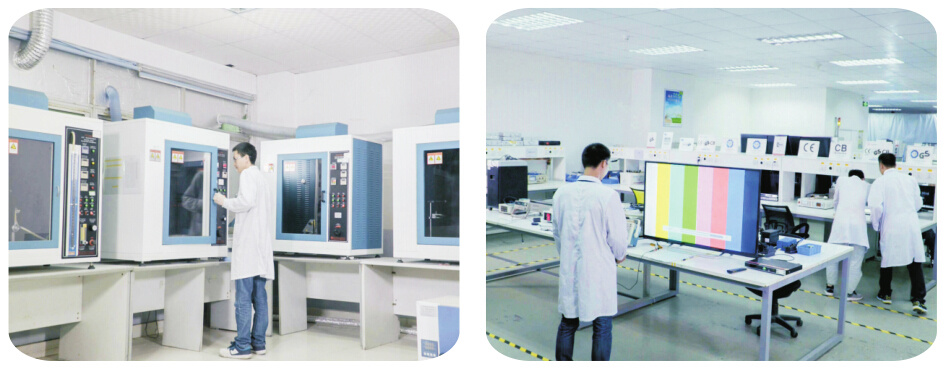
Mechanical inspection:
Test the project | Reference standards | Range of competence |
Vibration test | GB/T 2423.10-2008; IEC 60068-2-6: 2007 EN 60068-2-6: 2008; GB/T 2423.56-2006 IEC 60068-2-64: 2008; EN 60068-2-64: 2008 | Maximum thrust: 3kN; Maximum acceleration: 1000m/s2 Frequency range: 5Hz~2000Hz; Maximum displacement: 25mm Maximum load of countertop: 120kg |
Mechanical impact test | GB/T 2423.5-1995; IEC 60068-2-27: 2008 IN 60068-2-27: 2009 | half-sine wave; Impact acceleration range: 150~15000m/s2 Pulse duration: 0.5~18ms; Maximum countertop load: 5kg Table size: 200×200mm |
Drop test | GB/T 2423.8-1995; IEC 60068-2-31: 2008 IN 60068-2-31: 2008 | Drop height: 30~150cm; Maximum countertop load: 70kg |
IK test (enclosure protection against external mechanical impact) | GB/T 20138-2006; IEC 62262: 2002 IN 62262: 2002 | Impact energy: 5J, 10J, 20J |
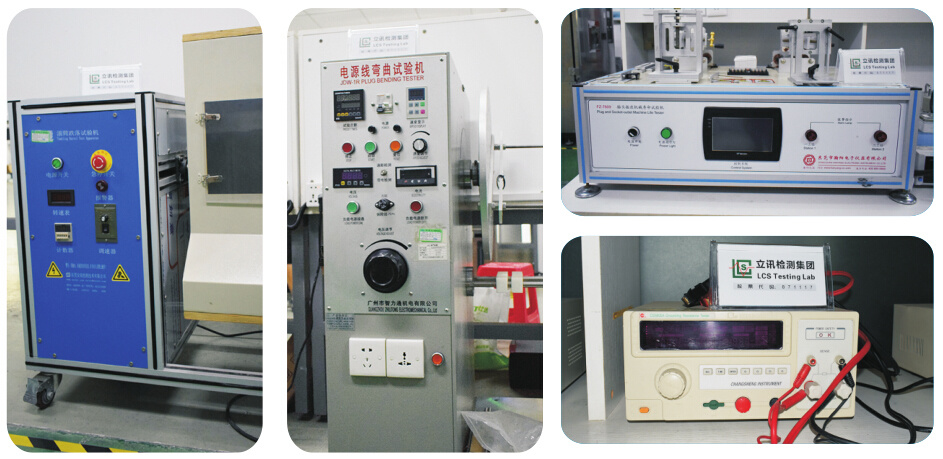
Combustion testing:
Test the project | Reference standards |
Glow wire test | GB/T 5169.10-2006; GB/T 5169.11-2006; GB/T 5169.12-2013; GB/T 5169.13-2006 IEC 60695-2-10:2013; IEC 60695-2-11:2014 IEC 60695-2-12:2010+A1: 2014; IEC 60695-2-13:2010+A1: 2014 EN 60695-2-10:2013; IN 60695-2-11:2014 EN 60695-2-12:2010+A1: 2014; IN 60695-2-13:2010+A1: 2013 |
Needle flame test | GB/T 5169.5-2008; GB/T 5169.16-2008; GB/T 5169.17-2008 IEC 60695-11-5:2016; IEC 60695-11-10: 2013; IEC 60695-11-20: 2015 IN 60695-11-5: 2017; EN 60695-11-10:2013; IN 60695-11-20:2015 |
Tracking test | GB/T 4207-2012; IEC 60112:2003+A1: 2009; EN 60112:2003+A1: 2009 |
Horizontal combustion test | UL94; GB/T 2408-2008 |
Vertical combustion test | UL94; GB/T 2408-2008 |
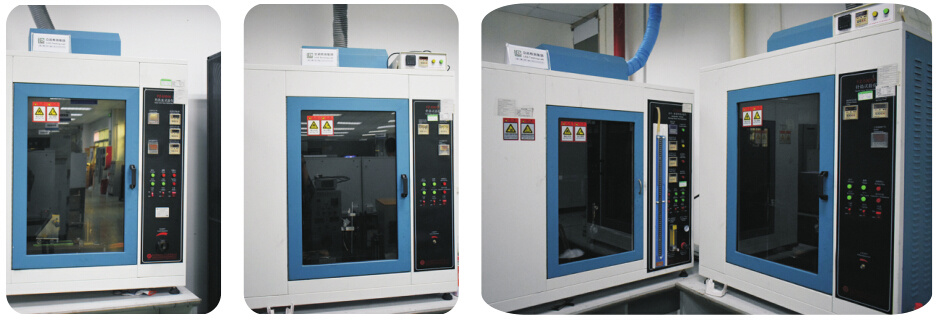
其他检测:
测试项目 | 参考标准 |
Withstand voltage test | GB/T 1408.1-2016; ASTM D149-2009(2013); IEC 61180-1-2010; GB/T 17627.1-1998 |
Drum drop test | GB/T 2423.8-1995; IEC 60068-2-32-2007 |
Wire bending test | IEC 60335-1-2010/Amd 2-2016/Cor 1-2016; GB/T 2099.1-2008 |
Ball pressure test | GB/T 5169.21-2006; IEC 60695-10-2: 2014; EN 60695-10-2:2014 |
Temperature rise test | Standards for each enterprise |
Chemical resistance test | Standards for each enterprise |
Plugging test | Standards for each enterprise |

IT products and their peripherals: mobile phones, tablet computers, walkie-talkies, mice, keyboards, audios, etc.;
Wearable electronic products: headphones/Bluetooth headsets, smart watches/bracelets, VR glasses, etc.;
Car electronic products: car navigation, driving recorder, car camera, T-box, dashboard, car charger, car display, car lights, window control system, central control, etc.;
Electronic components: resistors, inductors, capacitors, PCBs, etc.;
Home electronic products: cameras, TVs, lamps, power adapters, etc.;
Non-charged products: mobile phone covers/bags, packing boxes, wiring harnesses, connectors, hardware products, etc.;
Other products: plastics, rubber, leather, textiles, tapes, automotive interior and exterior, etc.

Click Reliability Details to download the document
Large-scale experimental base
Professional Lab
Analysis Method
Testing/year




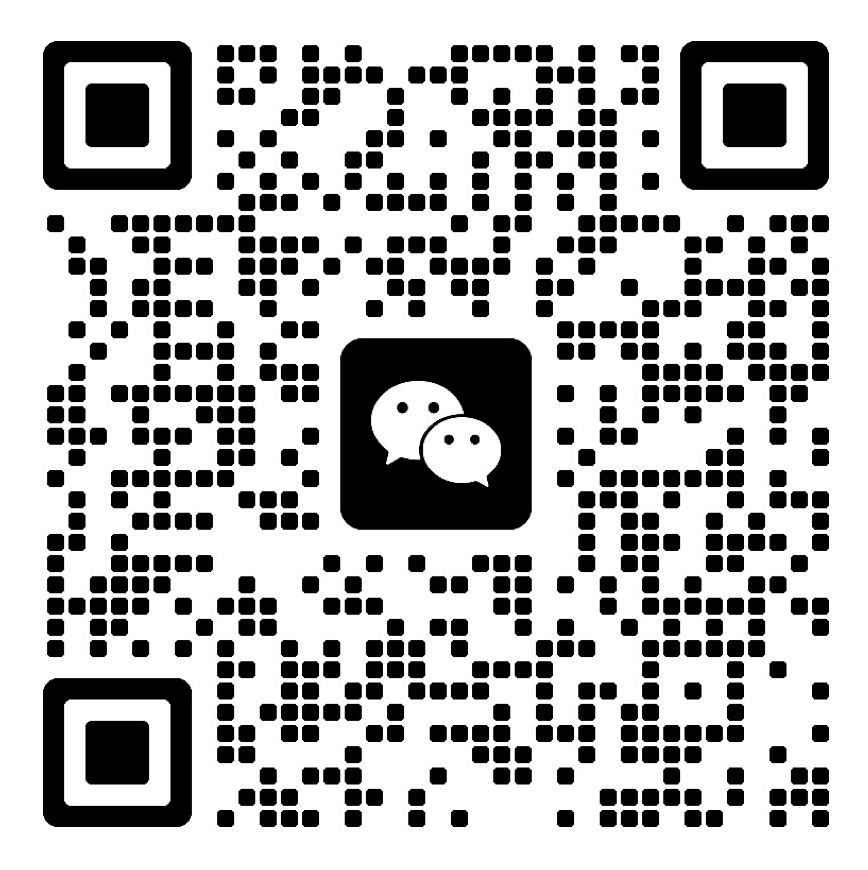 WeChat Inquiry
WeChat Inquiry
